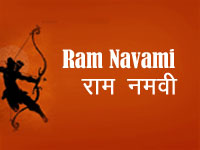Important information
- Address: Sai Nagar, Ayodhya, Uttar Pradesh 224123
- Temple Open and Close Timing: Summer - 07.30 am to 11.30 pm and 04.30 pm to 09.30 pm.
- Winter - 09:00 am to 11:00 am and 04:00 pm to 9:00 pm.
- Nearest Railway Station: Ayodhya Railway Station at a distance of nearly 2 kilometres from Ram Temple.
- Nearest Airport: Lucknow airport at a distance of nearly 146 kilometres from Ram Temple.
- Best Time ot Visit: October-February is the best time to visit and (Early morning, before 8:00 am).
- Primary deity: Ram
- Important festival: Ram Navami, Dussehra, and Diwali.
- Other names: Ayodhya Temple, Ayodhay Ram Lala Temple.
- District: Faizabad,
- Did you Know: Ram Janmabhoomi is a disputed place which is between Hindus and Muslims. The Supeme Court gave the decision to build the Ram temple on 9 November 2019.
Ram Temple is the place on which Lord Vishnu was born as form Lord Ram of the 7th Avatar. The place is located in Ayodhya city, Uttar Pradesh, India. There is a temple dedicated to Lord Ram on the birthplace. This is a disputed place which is between Hindus and Muslims.
In Ramayana the mythical granth of Hindus, it is said that Ram's birthplace is on the banks of the Sarayu River in Ayodhya town. A section of the Hindu claims that Shri ram's place of birth is right where Babri Masjid remains. For the first time in the 15th century, the first Mughal emperor Babur's commander, Mir Baar, demolished the temple and built a mosque at this place.
It is believed that this place was a religious place for Muslims from 1528 to 1853. Political, historical and socio-religious debates at the history and place of Babri Masjid and Ram birth place, where was the temple and the temple was demolished or modified to make it, which is called the Ayodhya dispute.
In 1992, the demolition of Babri Masjid by Hindu nationalists gave birth to widespread Hindu-Muslim violence. Archaeological excavation has indicated the presence of a temple under the mosque's debris.
In the city of Ayodhya, it is said that there are around 6000 temples, although it is believed that the shrines situated in the Ram Janmabhoomi campus of Ramkot are considered to be the most sacred. Some of the major Hindu pilgrimage in this complex includes:
- Ram Janmabhoomi - In the place where Rama is believed to have been born.
- Sita Rasoi - Sita's Kitchen, Sita was the wife of Ram and she was the incarnation of Goddess Lakshmi.
- Keikai Bhawan - Room of Keikai, the step-mohter of Ram, the place where Bharat was born.
- Kaushalya Bhawan - Kaushalya Room, Ram's Mother.
- Sumitra Bhawan - Room of Sumitra, step-mother of Rama and mother of Laxman and Shatrughan.
- Angad Tila - dedicated to pilgrim Angad, Vanara Rajkumar.
- Lov Kush temple - dedicated to love and sons of Kush, Ram and Sita.
- Hanuman Temple - Temple dedicated to Lord Hanuman.
- Rang Mahal - Royal Entertainment Room.
A brief history of the Ram Janmabhoomi controversy is as follows:
- In 1528, the mosque was built on the birth place of Ram. According to the mythical granth Ramayana and Ramcharit Manas of Hindus, Lord Rama was born here.
- In 1853, this land was first dispute between Hindus and Muslims.
- In 1859, the British asked the Muslims to take part inside of the place for prayers and the Hindu to take outside part of the place for worship, keeping in mind the dispute.
- In 1949, the statue of Lord Rama was kept in the inner part. Seeing the tension rising, the government locked it in its gate.
- In 1986, the District Judge ordered the disputed site to be opened for worship of Hindus. The Muslim community constituted the Babri Masjid Action Committee against it.
- In 1989, the Vishwa Hindu Parishad launched a Ram temple campaign on the land adjacent to the disputed site.
- On December 6, 1992, Hindu nationalists demolished the mosque, resulting in more than 2,000 deaths in communal riots.
- 10 days later, on December 16, 1992, the Liberhan Commission was constituted. Retired Chief Justice of Andhra Pradesh High Court M.S. Libran was appointed the Chairman of the Commission.
- The Liberhan Commission was asked to submit report on March 16, i.e. in three months, but the commission has spent 17 years in the report.
- On June 30, 2009, the Liberhan commission handed over 700 pages of report in four parts to Prime Minister Dr. Manmohan Singh and Home Minister P. Chidambaram.
- The term of the inquiry commission was extended 48 times.
- The term of the Liberhan Commission, which ended March 31, 2009, extended for three months i.e. till 30th June.
- On 9 November 2019, the Supreme Court gave its final verdict, and ordered the Central Government to make the institution for the construction of the temple in 3 months to build the Ram temple at the disputed site. The Central Government was ordered to give 5 acres of land to the Muslim side only.
The foundation stone for the construction of the temple on the Ram Janmabhoomi is set to be 5 August 2020. On this occasion, the construction committee of the temple has invited the Prime Minister of India, Shri Narendra Das Modi. The foundation stone of the temple is to be laid by Shri Narendra Das Modi.

